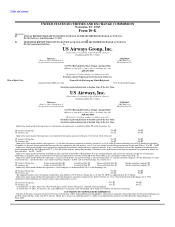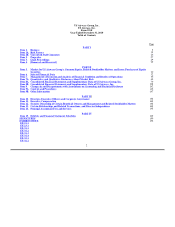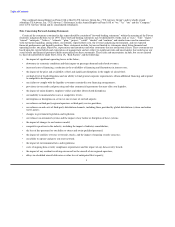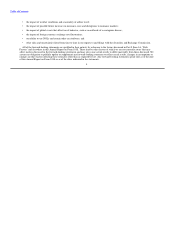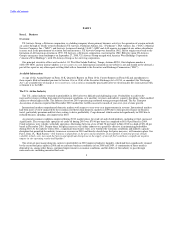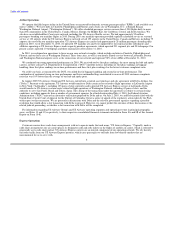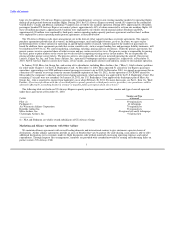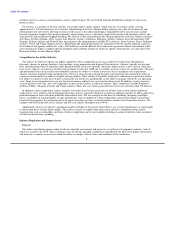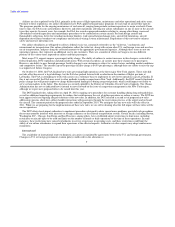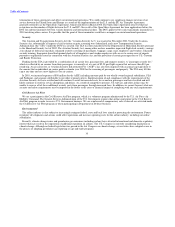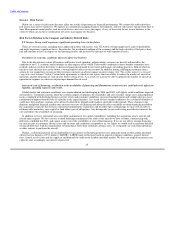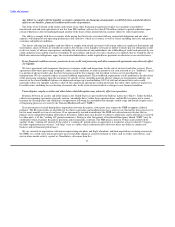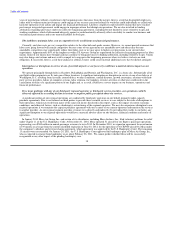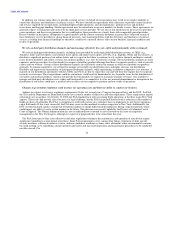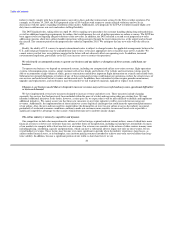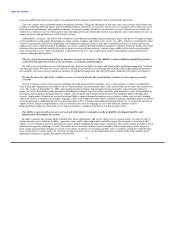US Airways 2010 Annual Report Download - page 12
Download and view the complete annual report
Please find page 12 of the 2010 US Airways annual report below. You can navigate through the pages in the report by either clicking on the pages listed below, or by using the keyword search tool below to find specific information within the annual report.
Table of Contents
Even without further federal legislation, the U.S. Environmental Protection Agency ("EPA") may act to regulate greenhouse gas
emissions. In December 2009, the EPA issued its final Endangerment and Cause or Contribute Findings for Greenhouse Gases, which
became effective in January 2010. This regulatory finding sets the foundation for future EPA greenhouse gas regulation under the Clean
Air Act. The EPA also promulgated a new greenhouse gas reporting rule, which became effective in December 2009, and which requires
facilities that emit more than 25,000 tons per year of carbon dioxide-equivalent emissions to prepare and file certain emission reports.
While some of our facilities may be covered by this rule in the future, currently none of our facilities meet the threshold for reporting. On
February 3, 2009, the EPA adopted regulations implementing changes to the renewable fuel standard program, which require an
increasing amount of renewable fuels in the nation's transportation fuel mix. The EPA is also considering additional regulatory programs.
Depending on the final outcome of this rulemaking, some of our facilities may be subject to additional operating and other permit
requirements. As a result of these various regulatory initiatives, our operating costs may increase in compliance with these programs,
although we are not situated differently in this respect from our competitors in the industry.
In addition, the EU has adopted legislation to include aviation within the EU's existing greenhouse gas emission trading scheme
effective in 2012. This legislation has been legally challenged in the EU but we have had to begin to comply and incurred additional
compliance costs as a result of this legislation. While we cannot yet determine what the final regulatory scheme will be in the U.S., the
EU or in other areas in which we do business, such climate change-related regulatory activity in the future may adversely affect our
business and financial results.
For more discussion of environmental regulation, see Part I, Item 1A, "Risk Factors – We are subject to many forms of environmental
regulation and may incur substantial costs as a result."
Employees and Labor Relations
Our business is labor intensive. In 2010, wages, salaries and benefits were one of our largest expenses and represented approximately
23% of our operating expenses. As of December 31, 2010, US Airways employed approximately 30,900 active full-time equivalent
employees, including approximately 4,000 pilots, 7,000 flight attendants, 5,700 passenger service personnel, 5,900 fleet service
personnel, 3,200 maintenance personnel and 5,100 personnel in administrative and various other job categories. Our Express subsidiaries,
Piedmont and PSA, employed approximately 4,900 active full-time equivalent employees, including approximately 800 pilots, 500 flight
attendants, 2,800 passenger service personnel, 400 maintenance personnel and 400 personnel in administrative and various other job
categories.
A large majority of the employees of the major airlines in the United States are represented by labor unions. As of December 31, 2010,
approximately 86% of our active employees were represented by various labor unions. Relations between air carriers and labor unions in
the United States are governed by the Railway Labor Act ("RLA"). Under the RLA, collective bargaining agreements generally contain
"amendable dates" rather than expiration dates, and the RLA requires that a carrier maintain the existing terms and conditions of
employment following the amendable date through a multi-stage and usually lengthy series of bargaining processes overseen by the
National Mediation Board ("NMB").
If no agreement is reached during direct negotiations between the parties, either party may request the NMB to appoint a federal
mediator. The RLA prescribes no timetable for the direct negotiation and mediation processes, and it is not unusual for those processes to
last for many months or even several years. If no agreement is reached in mediation, the NMB in its discretion may declare that an
impasse exists and proffer binding arbitration to the parties. Either party may decline to submit to arbitration, and if arbitration is rejected
by either party, a 30-day "cooling off" period commences. During or after that period, a Presidential Emergency Board ("PEB") may be
established, which examines the parties' positions and recommends a solution. The PEB process lasts for 30 days and is followed by
another 30-day "cooling off" period. At the end of a "cooling off" period, unless an agreement is reached or action is taken by Congress,
the labor organization may exercise "self-help," such as a strike, and the airline may resort to its own "self-help," including the imposition
of any or all of its proposed amendments and the hiring of new employees to replace any striking workers.
11


